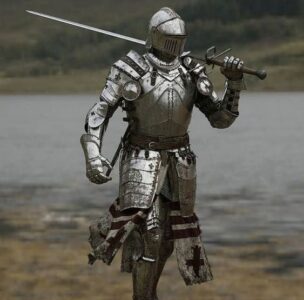Medieval armour, with its intricate designs and robust construction, laid the foundation for modern protective gear. During the Middle Ages, knights wore layered metal plates, chainmail, and padded garments to shield themselves from arrows, swords, and blunt force. This emphasis on multi-layered protection influenced the development of contemporary armor. Modern protective gear, from military uniforms to sports equipment, reflects medieval innovations. For example, the concept of layering remains integral in modern bulletproof vests and riot gear, which use advanced materials like Kevlar and ceramic plates to provide high-level protection. The ergonomic design of medieval armor, which balanced mobility with defense, also inspired modern protective wear, ensuring that users can move freely while remaining shielded from harm. Furthermore, medieval advancements in metallurgy and the use of specialized fittings and fastenings continue to inform modern engineering, resulting in gear that is both durable and functional. In essence, the evolution from medieval to modern armor showcases how historical designs have been adapted and refined to meet contemporary needs, blending tradition with technological progress to enhance safety and performance.

